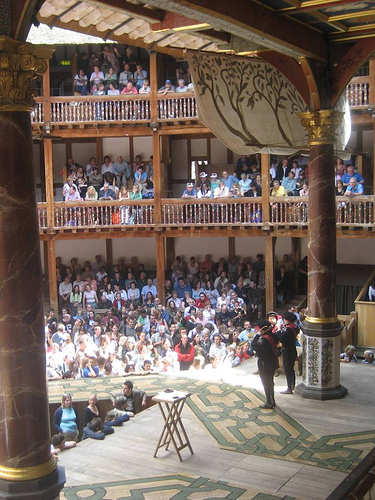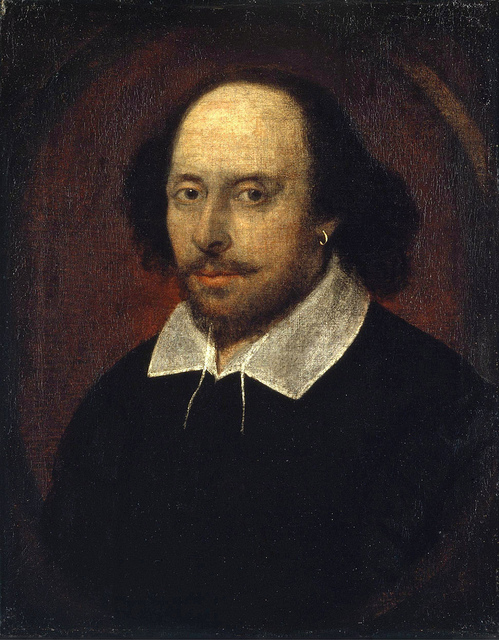Do you know who wrote these famous lines? A very famous play writer in the 16th century in England. His name was William Shakespeare. He was born in the April of 1564 and lived till 52 years of age. His style of writing was very dramatic. In those times, people spoke in a very different manner. If you read those plays you will find them difficult to read. For example,
” Fair is foul and foul is Fair” OR “To be or not to be”
Funny huh! Yes, it has been more than 400 years since those plays were written. Imagine what will people think of the way we speak now after 400 years.
 Most of the plays written in those times were performed in a famous theatre, Globe theater. It was an open roof theater the only light that was available was through the sky or the lit torches. In those times, only men acted in the plays. People cheered or booed during a play depending on whether they were liked it or not. So the plays in those days had to be really good. Guess who was one of the writers for this Globe theater William Shakespeare, one of the world’s most famous writer.
Most of the plays written in those times were performed in a famous theatre, Globe theater. It was an open roof theater the only light that was available was through the sky or the lit torches. In those times, only men acted in the plays. People cheered or booed during a play depending on whether they were liked it or not. So the plays in those days had to be really good. Guess who was one of the writers for this Globe theater William Shakespeare, one of the world’s most famous writer.
It is said that Shakespeare move to London as a young man. Here, he met a lot of people. Some were crooks, soldiers, laborers, royal men.
He was very interested in reading. Then he started writing plays on his own. Sometimes he made up words while he wrote. Mostly his role models or the characters of the play were the people that he met, but often he had witches and ghosts playing a part or two.
He wrote all different kinds of plays. Some were funny plays, some were tragic plays or some about great wars. The plays had a lot of songs and poetry. Another interesting thing about his plays was that the main characters when alone talked to themselves a lot. These are called soliloquies. A soliloquy is an act of speaking one’s thoughts aloud when by oneself or regardless of any hearers, esp. by a character in a play.
Times have changed, theaters have changed and so has the audience, but Shakespearean plays are still very famous even today. They are also a part of the school curriculum in English literature.





Leave a Reply